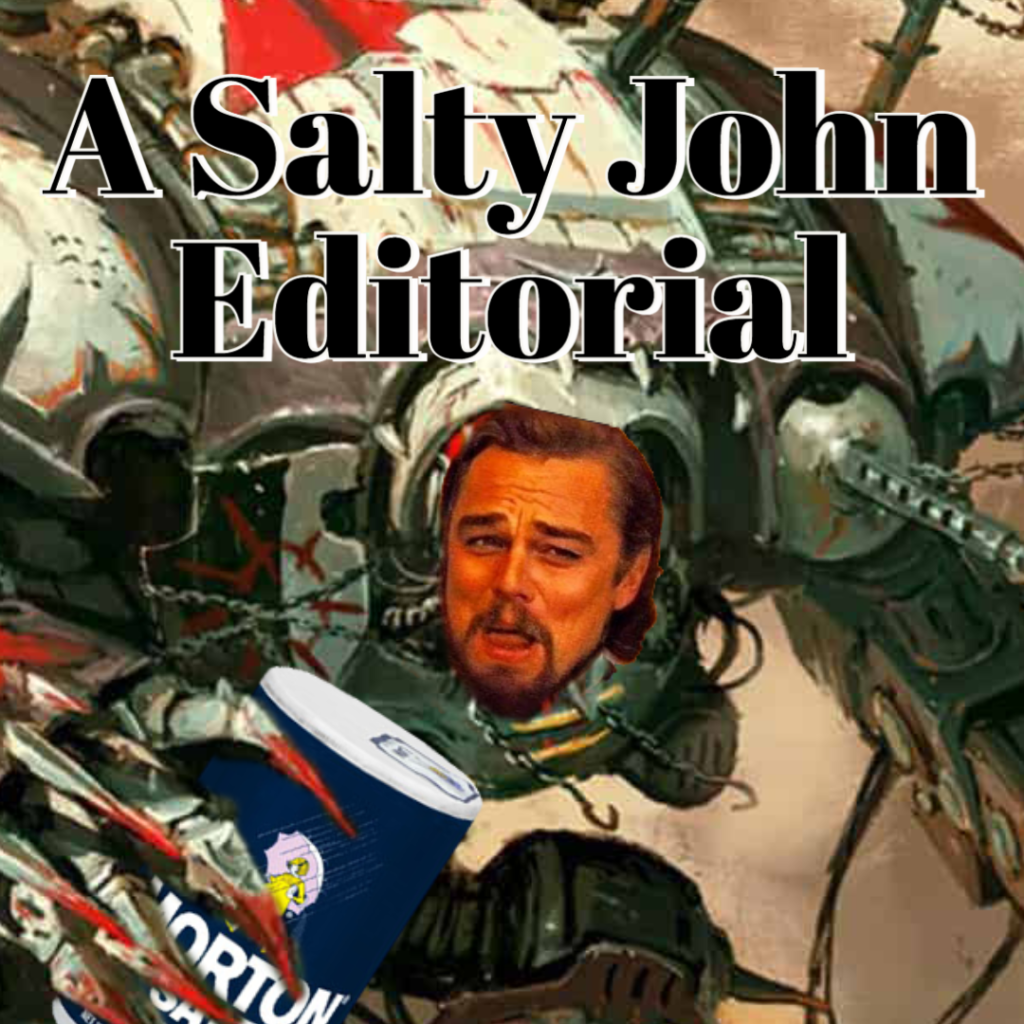Warhammer 40k competitive play enthusiasts! Salty John from TFG Radio coming at you with another review of the Week in the ITC! This time in binary.
Before we jump into a discussion of this past weekend and the announcements by Frontline Gaming surrounding the Terrain for the Lone Star Open here is a quick look at the current top 10 in the ITC.
The top 10 is much the same as it has been, with some names bobbing up and down the rankings here and there. There is now a healthy number of household competitive 40k names in the top 10 week to week and we’ve left the wild west period of the season firmly behind us.
This past weekend we had our first real sampling of the Adeptus Mechanicus book out in the wild for Competitive 40k and boy is it a good book. The big event that had most people talking was the Show-Me Showdown. Going into round 5 the top 5 undefeated were 4 Adeptus Mechanicus and 1 Adepta Sororitas player. The internet has collectively been howling about the apparently overpowered nature of the Adeptus Mechanicus book, especially the raw power of the codex in the shooting phase. The event was won by Ben Cherwien piloting an Admech list, who until this event had been playing Drukhari.
The top 8 was more balanced than it looked like it was going to be going into rounds 5 and 6. When all was said and done there were 3 Cult Mechanicus players, 1 Dark Angels, 1 Imperium, and 3 Drukhari. So, 6 of the top 8 were representing the 2 most powerful books in the game right now. Ben’s list featured 80 Skitarii Rangers in 4 blocks of 20. The massive amount of firepower the list puts out in the shooting phase is, as I mentioned above, one of the main gripes many players have with the codex. Generally, these articles are not a place for me to whine about the state of the meta or a current codex, there’s plenty of places on the internet for us to find that. While the Drukhari and Cult Mechanicus books are clearly in need of some taming the competitive players seem to have a limited set of solutions they want and almost only engage in whining about it.
Besides the power of certain codices, and the complaint that the GW nerf bat doesn’t come down often enough or hard enough, the biggest complaint so far this season has been terrain. I wrote briefly about this previously in this article series but today let’s look at the big changes that FLG has made in response to player feedback from the ACO. Note, these changes were made based on actual ACO attendee feedback and not the feedback of the vocal minority of non-players/non-attendees that tend to dominate the online discussions. For LSO FLG published yesterday in the LSO packet the way they are going to have terrain keyworded, and that each player will place the terrain on their side of the board and the rules for doing so.
The biggest terrain complaints, given without offering a solution usually, have centered around the terrain isn’t placed well enough to consistently allow for coverage based on the deployment and objective placements for every mission. This was demonstrably true, and no one denies it, so in an effort to make the terrain more consistent across the varied deployment and objective setups you can only take one of two approaches. Try to create a universal terrain setup (or a set of terrain setups) that will always be good no matter the mission, or make ones for each mission specifically. Or, allow for player-placed terrain. The first option is generally difficult to pull off, especially for large events. It requires large amounts of universally built terrain, which is a hard thing to have and also somewhat boring. Also, creating a terrain setup archetype(s) that will be good for every army is also practically impossible. So, what about option 2, player-placed terrain?
Just to be clear LSO/FLG is not taking the Adepticon route of player-placed terrain, and instead is allowing the players to place the terrain on their own sides only, within certain parameters, and after placing the objectives and choosing deployment zones. This is both faster and more useful to the players, than both players setting up the entire board together. The idea behind this is that players will be able to create a space for their army to deploy in that will provide them with the best chance of mitigating the turn 1 alpha strike that many 9th ed armies are currently capable of bringing down. The other big changes are with a few terrain designations, several pieces on each terrain map are being given the Heavy Cover designation. This is also in response to actual ACO attendees’ feedback about the survivability of units in ruins/buildings/area terrain on the first turn. Several pieces of terrain are also being given the Obscuring designation even though they may not usually fit the criteria as laid out in the Core Rulebook. This will also help provide players with more areas to hide behind or gain other terrain benefits. The hope is to gain even more feedback from the Lone Star Open attendees on how this actually worked for the people who played it in real life and adjust it for future events as needed. This is not set in stone, like any good TO, the FLG crew is open to trying out new ideas and making changes based on legitimate feedback from the attendees of the events. If you would like to try out the new terrain placement process and designations for yourself check out the Lone Star Open player packet! As usual, let me know what you think in the comments.
And remember, Frontline Gaming sells gaming products at a discount, every day in their webcart!

